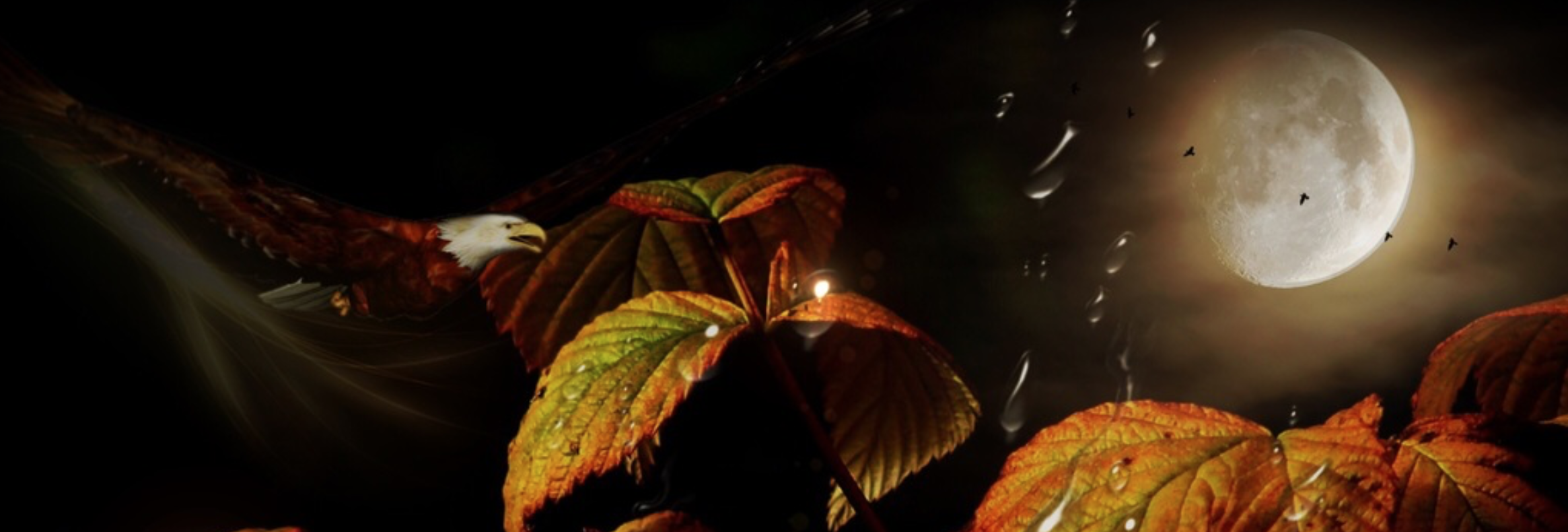4.2: Description
- Page ID
- 28073
Description

The Purpose of Description in Writing
Writers use description in writing to make sure that their audience is fully immersed in the words on the page. This requires a concerted effort by the writer to describe the world through the use of sensory details.
As mentioned earlier in this chapter, sensory details are descriptions that appeal to our sense of sight, sound, smell, taste, and touch. The use of sensory details provides you the greatest possibility of relating to your audience and thus engaging them in your writing, making descriptive writing important not only during your education but also during everyday situations.
To make your writing vivid and appealing, avoid empty descriptors if possible. Empty descriptors are adjectives that can mean different things to different people. They are words like:
- good
- beautiful
- terrific
- nice
The use of such words in descriptions can lead to misreads and confusion. "A good day," for instance, can mean far different things depending on one's age, personality, or tastes.
Exercise: Practice Descriptions

On a separate sheet of paper, describe the following five items in a short paragraph. Use at least three of the five senses for each description.
- Night
- Beach
- City
- Dinner
- Stranger
The Structure of a Description Essay

Description essays typically describe a person, a place, or an object using sensory details. The structure of a descriptive essay is more flexible than in some of the other rhetorical modes. The introduction of a description essay should set up the tone and focus of the essay. The thesis should convey the writer's overall impression of the person, place, or object described in the body paragraphs.
The organization of the essay may best follow spatial order, which means an arrangement of ideas according to physical characteristics or appearance. Depending on what the writer describes, the organization could move from top to bottom, left to right, near to far, warm to cold, frightening to inviting, and so on. For example, if the subject were a client's kitchen in the midst of renovation, you might start at one side of the room and move slowly across to the other end, describing appliances, cabinetry, and so on. Or you might choose to start with older remnants of the kitchen and progress to the new installations. Or maybe start with the floor and move up toward the ceiling.
Exercise: Organizing Description

On a separate sheet of paper, choose an organizing strategy and then execute it in a short paragraph for one of the following items:
- Train station
- Your office
- Your car
- A coffee shop
- Lobby of a movie theater
- Mystery Option: Choose an object to describe but do not indicate it. Describe it, but preserve the mystery.
Writing a Description Essay

- Choosing a subject. The more you focus the subject, the more detailed you can make your essay. For example, if the subject is, "The World," the subject is so big that there is no room for detail. Focusing down to something as small as a single tree or a lake will help you write better detail.
- Once you have chosen the person, place, or object you want to describe, your challenge is to write an effective thesis statement to guide your essay. Think about the most important aspect of the essay, what do you want to illuminate? Maybe you can think of a metaphor or a simile to guide you? You can also focus on your organization. Example Thesis: "My office is like the caldera of a volcano, with my computer at the center."
- The remainder of your essay describes your subject in a way that best expresses your thesis. Remember, you should have a strong sense of how you will organize your essay.
The remainder of your essay describes your subject in a way that best expresses your thesis. Remember, you should have a strong sense of how you will organize your essay.
Choose a strategy and stick to it. Every part of your essay should use vivid sensory details. The more you can appeal to your readers' senses, the more they will be engaged in your essay. You can read a sample essay at the end of this section.
Exercise: Write a Descriptive Essay

You will begin work on a five-paragraph descriptive essay.
On a separate sheet of paper, choose something to describe. It should be a person, place, or thing that is focused enough for you to include detail.
Next, choose an organizing principle. Spacial organization usually works well for a descriptive essay.
Expanding on ideas in greater detail can be difficult. Sometimes it is helpful to write a summary paragraph then use those sentences as topic sentences for larger paragraphs. Also, it is helpful to identify empty descriptors like "tall," "big," "good," "nice." After you have identified them, circle them and go from descriptor to descriptor, finding better ways to describe your subject. It also helps to go through each of your senses during your description to make sure you have added as much as possible:
- sight: what does it look like?
- hearing: what does it sound like?
- smelling: what does it smell like?
- tasting: what does it taste like?
- sensory: what does it feel like?
Sample Description Essay

In the following student essay, notice how the writer uses sensory details to describe not only the visual appearance of Dr. Martin Luther King, Jr.'s tomb, but also the experience of visiting such a historically significant and emotionally moving monument.
Sharif Ray
Professor X
English 1101
11 June 2014
The King's Tomb
The water is always so beautiful, a hypnotic shade of baby blue, with a few autumn colored leaves floating in the ripples made by the wind. This isn't a natural body of water. No wildlife swim in the shallow waves, but this water is as full of life as any ocean. In the middle of what is fittingly called the Reflecting Pool lies the closest thing African Americans have ever had to royalty. Here lie the remains of Dr. Martin Luther King and Coretta Scott King.
Nestled between the King Center for Nonviolent Social Change and the original Ebenezer Baptist Church is a beautiful white marble monument, warmly bathed in the lights circling the tomb of our late civil rights leaders. Following Dr. King's assassination in April 1968, he was first interred at South View Cemetery, a final resting place largely reserved for African Americans during that period. It took nearly a decade before he was exhumed and placed in the beautiful ivory stone structure that he now shares with his beloved wife Coretta. The tomb, erected in 1977, sits within the south end of the Reflecting Pool. Seemingly suspended on the bright blue water, the tomb displays scriptures that only capture a small portion of the legacy left by these great leaders. Engraved on Dr. King's portion reads, "Free at last, Free at last, Thank God Almighty I'm free at last!" from his pivotal "I Have a Dream" speech given during the March on Washington in 1963. I can't help but attempt to recite the mantra in my head with the same bravado and conviction as Dr. King had when he gave the speech over fifty years ago. While the saying is a beautiful incantation, fit for a King, the cost at which that freedom was attained is still heartbreaking.
In a scene reminiscent of Romeo and Juliet, Mrs. Coretta Scott King, who passed away in January 2006 after a prolonged illness, lies next to her slain husband. For a short period following her death Mrs. King was interred in a smaller yet equally beautiful tomb directly across from her late husband. Spectacular floral arrangements surrounded her tomb as scores of mourners came from afar to pay their respects to the First Lady of the Civil Rights Movement. In November 2006, she was laid to rest in a beautiful new tomb aside her husband. The words "And now abide Faith, Hope, Love, These Three, but the greatest of these is Love," emblazon her final resting place. No truer instance could describe her legacy.
Auburn Avenue, shrouded in darkness, is void of people aside from the few vagrants that aimlessly roam the streets. Heat from the Eternal Flame warms my back as I stare off into space. The brilliant glow of the LED lights strategically placed around the tomb and the amber flicker of the Eternal Flame are the only lights that seem to suit this moment. Kneeling as if I'm preparing to pray, I take a moment to reflect. Through my clenched eyes I can hear the soft splashes of the water, the gas fueled roar of the Eternal Flame. The ambient noise of car horns, traffic and construction fade to nearly a whisper. I envision the March on Washington. I can feel the sting of water hoses pelting my black skin. I can hear the sharp sonics of police dogs barking. The feeling is overwhelming. My eyelashes clump together from the tears winning their battle against my eyelids. Nearby is a place of worship, a place where anyone can still feel the spirit of past congregations, a place where the walls hold almost as much history as any Smithsonian exhibit.
Just a few feet away sits the original Ebenezer Baptist Church, a beautiful, rustic old building left largely intact from the days of Atlanta's past. Walking inside is like stepping into a time warp, instantly sending you to the heart of the Civil Rights Movement. With the exception of a few strategically placed speakers, the church is left in its pure form. Dr. King's voice echoes through wooden pews playing his famous "Drum Major" speech, given during his final sermon at Ebenezer on February 4, 1968. With closed eyes, I have difficulty telling what era I am in. Given with almost Machiavellian prediction and passion, ten minutes engulfed with his powerful words makes me feel as though I've been baptized, born again.
Surrounded with reminders of our history's darkest time, this place brings me peace. There's an aura in this place. A powerful spirit that infiltrates my conscience with thoughts of struggle, loss and freedom. The reality of this place forces my mind to reevaluate my own mortality. Even with the knowledge of how Dr. King was vilified, degraded, and executed, his death serves as a shining beacon of light. A lone ray of sun through the seemingly endless cloud of racism and intolerance. Coretta's grace, beauty and resilience in the face of unspeakable tragedy and injustice is incomparable. Her social work and philanthropy should be an influence to women of all walks of life.
The legacy that Dr. and Mrs. King leave behind is a unfulfilled one. Equality in America has improved since Dr. King's assassination but his dream is still unrealized. There is turmoil within the King family regarding funding and management of the King Memorial, leaving the future of this serene place uncertain. Engraved on the Stone of Hope, a newly completed Martin Luther King Jr. Memorial in Washington, D.C., reads, "Out of the Mountain of Despair, a Stone of Hope." Although we still have a mountain to climb, The King's Tomb is surely my Stone of Hope.
Online Descriptive Essay Alternatives
*Note: Links to these articles may change or break. However, access to them may be free of charge if accessed through your college/university library database.
Susan Berne visits New York and describes her impressions in the New York Times article, "Where Nothing Says Everything" opens in new window also called "Ground Zero."
Heather Rogers provides a detailed description of a landfill that challenges the reader to consider his or her own consumption and waste in this excerpt opens in new windowfrom the book Gone Tomorrow: The Hidden Life of Garbage.


